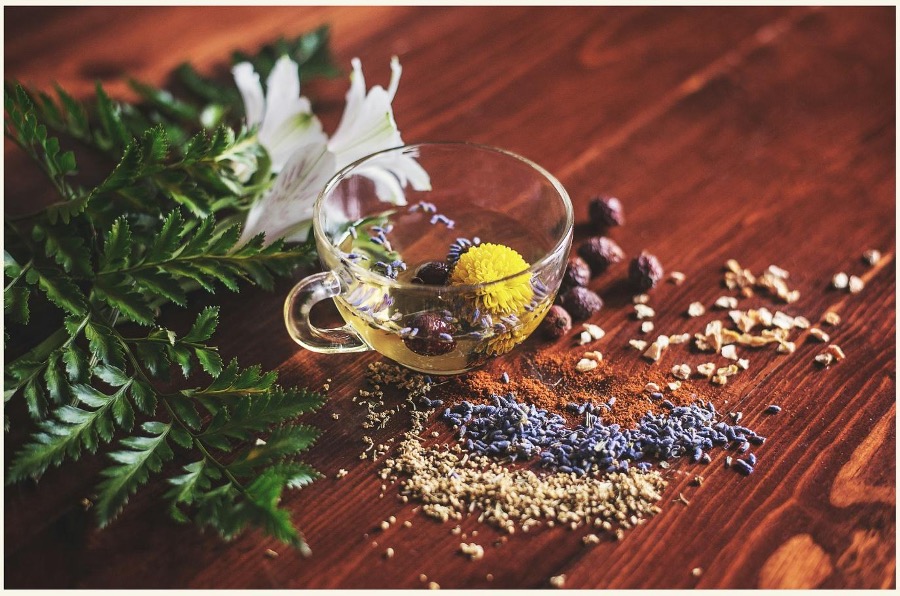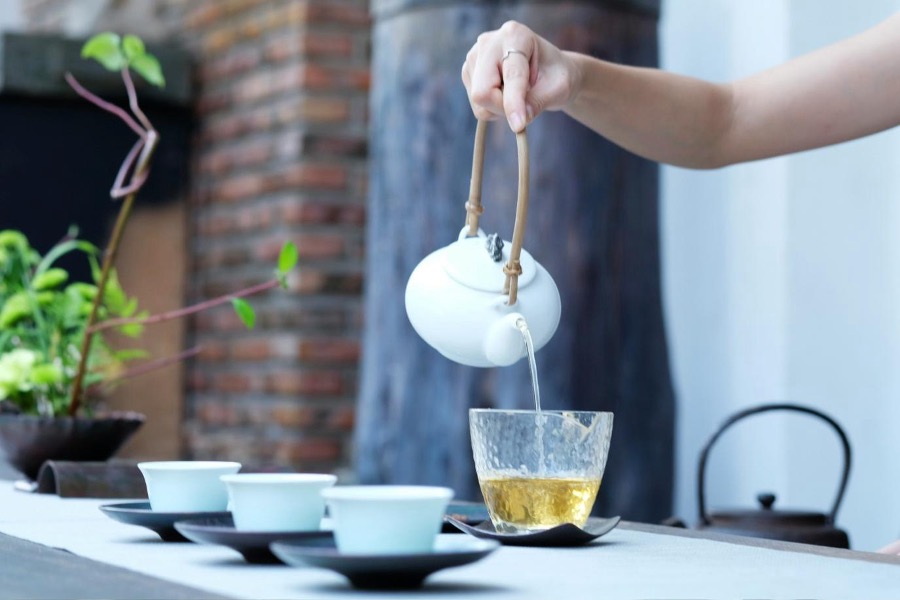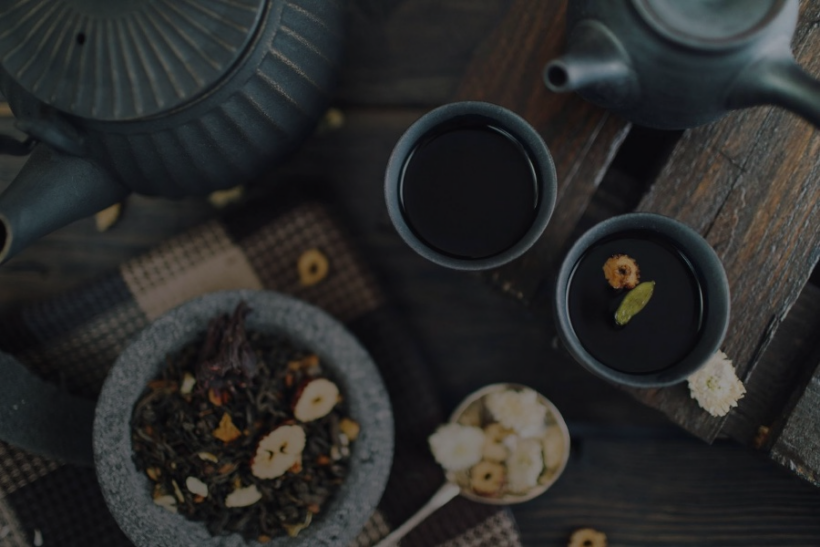Tea is unlike any other drink: making and drinking tea is rooted in the distant past, with mythical Chinese Emperor Shennong first giving it a try around 2727 BC. Indians have a different tea origins legend, tying it to Prince Dharma, who, during his 9-year meditation session, had to chew up a few tea leaves to stay awake. The Japanese have their spin on the story, with Bodhidharma failing to remain awake, which caused a memorable episode of him ripping off his eyelids. On falling to the ground, the eyelids became tea plants.
Despite the contradictory tea origin stories, its rich cultural heritage is undeniable, making it a trusty companion that sustained, refreshed, and soothed tea drinkers for millennia. In this exhaustive guide to tea culture around the world, we’ll delve deeper into the history of tea drinking, mention the most popular tea varieties in each country, and talk about the most common dos and don’ts when brewing the legendary beverage.
1. China: The Original Tea Country
In the 8th century, Chinese scholar Lu Yu wrote Tea Classic, the first known monograph on tea drinking, growing, and manufacturing. It’s no wonder that when it comes to tea tradition and varieties, China reigns supreme: for centuries, it has been the main tea-exporting country in the world.
The ancient tea-drinking tradition is encapsulated in the Gongfu tea ceremony, a complex ritual for brewing and serving tea that involves burning incense, inspecting the tea leaves, enjoying the aroma, holding the infusion with thumb and index finger in the ‘three dragons guarding the ding (vessel)’ way, while the middle finger supports the bottom of the cup, and, of course, tasting the beverage. The ceremony is also about aesthetics, so expect delicate and extremely expensive Yixing clay teapots to accompany you on this journey. If you’re extra ambitious, your goal is to appreciate the taste and the exquisite tea aroma, as well as cultivate your inner peace and harmony in the process.
Although the country boasts many green and black tea varieties, some of the most well-known include:
- Oolong. Traditionally produced in Fujian province, oolong is a semi-oxidized tea produced by withering the leaves under harsh sun. It combines the characteristics of green and black teas and boasts many antioxidants.
- White tea. Made from the most tender and young leaf tips and buds, white tea boasts a delicate flavor and silver-colored brew. It’s loaded with polyphenols that have powerful antioxidant properties, which help combat free radicals and boost overall health.
Other varieties that will certainly capture your attention are green teas like Dragon Well and Longjing and popular post-fermented Pu Erh tea.
2. Japan: The Tea and Culture of Matcha
Although tea came to Japan from China around the 8th century, the country developed its own rituals and tea varieties during the following centuries. Labeled as the elixir of the immortals by the traveling Japanese monk Eisai, tea plays a prominent role and is the most widely consumed beverage in the country.
The Japanese love for tea coalesced in the Chanoyu (or Sado) Tea Ceremony, defining the protocol from dress code to the exact hand movements, which varies depending on the school. The host typically brews tea in front of the guests, using a kettle, whisk, bowls, scoops, and other cutlery. Regardless of the school, the ceremony goal is not much different: appreciate the complex history, enjoy the beverage, and foster a sense of inner peace.
Matcha is undeniably the most popular tea variety in Japan. Although matcha originated in China, it became a quintessentially Japanese tea over centuries. Used in the majority of ceremonies, the fine-powdered green tea derives from shaded and young green tea leaves. The tea is loaded with antioxidants, has a high caffeine level, and has a distinct umami taste often described as oceanic.
Other popular Japanese teas are Sencha, a green whole-leaf tea with a grassy taste, and Gyokuro, a green tea with a prominent hearty-sweet umami taste.

3. India: One of the World’s Leading Tea Producers
Although tea was part of Indian tradition for centuries, large-scale production was initiated by the British East India Company to overcome the Chinese monopoly. Today, India is one of the largest tea exporters in the world. India boasts a wide range of tea varieties, with some of the most popular including:
- Assam Tea. Traditionally grown in Assam, the largest tea-producing location in the world, Assam tea is moderately bitter and has a malty and earthy flavor with distinct spicy notes.
- Darjeeling Tea. Also known as the champagne of teas, Darjeeling is a high-quality black tea with a citrusy flavor and golden or bronze hue. Unlike other popular black teas, Darjeeling is less bitter.
One of the most distinctive Indian beverages is masala chai, a black tea spiced with cardamom, ginger, and cinnamon, along with sugar and milk. Although the exact recipe depends on the region and individual preferences, masala chai is typically consumed multiple times a day.
4. United Kingdom: A Birthplace of Afternoon Tea
Asia may be the birthplace of tea, but Britain popularized the beverage and brought it to the next level. The tradition of drinking afternoon tea dates back to the early 19th century, with the seventh Duchess of Bedford, who would become hungry in the late afternoon and require a quick snack. The tea drinking is accompanied by scones, pastries, and sandwiches.
The majority of British teas are black teas, with some of the most popular varieties including:
- Earl Grey. This quintessentially British tea is a popular variety of black tea flavored with bergamot orange oil, which gives it a famous citrusy taste.
- English Breakfast. There is a reason why English Breakfast is the most commonly consumed tea in the UK. The bold and rich flavor with hints of bitterness and sweetness works best with a splash of milk or a slice of lemon.
5. Turkey: Turkish Delights and Flavored Teas
Although Turkey had its first sip of tea in the 20th century, it quickly gained traction among the locals. Turkish tea is served in tulip-shaped glasses and requires correct preparation in Caydanlik. The teapot has a distinct look and consists of two kettles: the lower kettle is used to boil water, while the smaller upper kettle is filled with tea leaves. This unique process minimizes the risk of scorching the leaves, preserving the taste of the tea and its benefits. The popular teas among the tourists and the locals are herbal teas with rose hip, linden flowers, and apples.
6. South America: The Origin of Invigorating Mate
The history of yerba mate stretches back to pre-Columbian times, with Guarani people, who lived in the regions of today’s Paraguay, Brazil, Argentina, and parts of Bolivia and Uruguay, chewing the green tea leaves of Ilex paraguariensis. This traditional South American tea requires a hollowed-out mate gourd and a metal straw. Although yerba mate boasts a potent mix of antioxidants, reduces inflammation, and boosts energy levels, first-time drinkers will find the taste extremely strong and bitter, with some mate types tasting slightly sweet.
7. Morocco: A Sweet Minty Taste of Bubbly Tea
Although tea became part of Moroccan tradition only around the mid-19th century, the beverage quickly became the country’s national institution and a cherished tradition. The Moroccan tea is green and heavy on spearmint and sugar. The tea and ceremony of Morocco require pouring the beverage from a height of up to half a meter into small, dainty glasses. Pouring the tea from the height cools the tea and adds a bubbly texture with foam on the top.

A Basic Guideline to Tea Drinking
Although brewing tea seems like a straightforward process, chances are you’re doing it wrong. Making tea is more than brewing the water and pouring it onto the leaves; there are a couple of rules that will help reveal the flavors and preserve the natural qualities of your preferred tea blend. Here are some tips and tricks to bring your tea-drinking experience to the next level.
1. Correct Tea Temperature
Water temperature plays a crucial role in the tea brewing process: too high of a temperature can result in a bitter, unpleasant taste, while too low will leave you with a cup of weak, flavorless tea. The ideal tea temperature depends on your tea type. Here’s a general guideline for the most common types of tea:
- Green Tea. Although there are many types of green tea, it generally flourishes at 75–80 °C. To preserve the delicate flavor, don’t steep it for too long; from 2 to 4 minutes is typically enough.
- Matcha. Powdered green tea is all the rage these days, but how do you prepare it? The matcha is generally prepared at 80 °C. If you prefer a softer and more mellow flavor, use a slightly lower temperature, around 70°C.
- Black Tea. Brewing black tea requires minimum hassle: pour 95-98°C water on the leaves and let it steep for 2 to 4 minutes. If you prefer a stronger taste, leave it for a little longer.
- English Breakfast Tea. The U.K.’s most popular tea is simple to prepare: pour near-boiling water (around 98°C) on the leaves and wait a couple of minutes. If you like your tea with a shot of milk, add it after ensuring the tea is properly brewed.
- Earl Grey. Another popular black tea is Earl Grey, which boasts a citrusy flavor of bergamot rind oil. It’s also easy to make: pour near-boiling water and let it steep for 3 to 5 minutes.
- Oolong. To drink a perfectly brewed cuppa of oolong, boil the water to around 90°C and let the tea steep for 3 minutes.

2. Choose Quality Teas
If you’re a tea enthusiast, perhaps it’s time to ditch cheap supermarket teabags. Although the bags have their virtues, like ease of disposal, they also come with some issues, the most prominent being microplastic contamination. Some tea bags are composed of PET and nylon, which, under contact with scorching hot water, can make microplastics leak into the tea. Of course, a quality product will be more expensive but certainly worth the buck, as it features a potent mix of antioxidants, has inflammation-reducing qualities, and boosts your general health. More expensive teas also have a richer aroma and flavors, as well as the subtlety and nuance that cheaper teas lack.
3. Don’t Add Honey to Hot Tea
Who doesn’t love a cup of tea with a delicate honey sweetness? Although honey is a much more healthy option than sugar, adding it to scorching-hot water will neutralize all of its miraculous and immune-system-boosting properties. Of course, it doesn’t mean you should ban this natural sweetener. Keep in mind that honey’s melting point is around 40°C; higher temperatures will destroy its healing antioxidant properties and beneficial enzymes.
4. Don’t Drink Tea After Your Meals
Although many people have a habit of drinking tea right after their meals, it is generally a bad idea. Tea leaves are acidic and interfere with the digestion of proteins. Another reason why you should ditch drinking tea after your meals is tannins. Present in green and black teas, tannins interfere with the absorption of many minerals, including calcium and zinc. It also negatively impacts iron absorption: one tea cup can decrease iron absorption by 59% to 49%. When should you drink the tea then? It’s recommended to wait up to twenty minutes before enjoying your favorite cuppa.
5. Try to Avoid Adding Sugar
It’s hard to imagine some of the popular teas like English Breakfast without a healthy splash of milk and a few bits of sugar. Unfortunately, sugar can reduce the health benefits of tea and lead to a slew of other problems. Weight gain and cavities aside, added sweeteners can also alter the flavor of tea. If you’re drinking more expensive tea, it’s a waste not to enjoy their exquisite flavors and tastes. To preserve the delicate taste of your preferred tea, don’t hurry up to add sugar to it.

Conclusion
Around the world, tea plays an important role in cultural and social rituals. From the complex Chinese Gongfu tea ceremony to antioxidant-boosting Argentinean mate, different countries created their own unique varieties and traditions. Luckily, it’s easy to join the global tea-drinking community; chances are that any of the larger supermarkets in your area feature some or even all of the mentioned teas. Why not expand your palette and give some of them a try?








